
This parent guide supports parents in helping their child at home with the 6th grade Science content.
- Subject:
- Science
- Material Type:
- Reference Material
- Vocabulary
- Author:
- Kelly Rawlston
- Letoria Lewis
- Date Added:
- 10/11/2022

This parent guide supports parents in helping their child at home with the 6th grade Science content.

This resource accompanies our Rethink 6th Grade Science course. It includes ideas for use, ways to support exceptional children, ways to extend learning, digital resources and tools, tips for supporting English Language Learners and students with visual and hearing impairments. There are also ideas for offline learning.
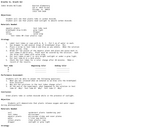
Students will investigate photosynthesis.

CK-12's Life Science delivers a full course of study in the life sciences for the middle school student, relating an understanding of the history, disciplines, tools, and modern techniques of science to the exploration of cell biology, molecular biology, genetics, evolution, prokaryotes, protists,fungi, plants, animals, invertebrates, vertebrates, human biology, and ecology. This digital textbook was reviewed for its alignment with California content standards.
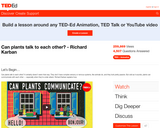
This brief video lesson discusses how plants communicate through air-borne chemical cues. Discussion/assessment questions and suggested supplemental resources are also included.

The recycled paper produced from the instructions provided contains an additional component - wildflower seeds. The entire paper disc can be planted; the sprouting of the flowers can be observed and analyzed. The Climate Kids website is a NASA education resource featuring articles, videos, images and games focused on the science of climate change.

Students study the structures involved in pollination. Having seen the common structures and how they vary in form from species to species, students should be able to make deductions about which pollinating agents and mechanisms affect the likelihhod of cross-pollination.
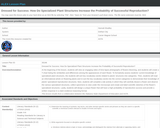
Students will view an engaging video of time-lapse photographs of flowers blooming, and students will create a T-chart listing the similarities and differences among the appearances of each flower. To formatively assess students' current knowledge of specialized plant structures, the students will sort key vocabulary words related to plants' structures into categories. Then, students will read an informational article on flowering plants and re-sort the key vocabulary words into the correct categories to demonstrate their knowledge of plants' specialized reproductive structures. Next, students will complete a lab activity in which they will carefully dissect a flower and observe the various specialized structures, collect specimens to view under the microscope and create and label scientific sketches of the flower's specialized structures. Lastly, students will design a unique flower that will have a high probability of reproductive success and provide a written response in a claim-evidence-reasoning format.
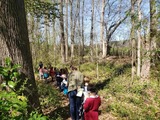
The North Carolina Museum of Natural Science created this resource as part of an online workshop series, but you are welcome to use or modify it for your classroom. It includes a video and written directions for creating nature journals and tips for incorporating them into your classroom. For information on taking any the Nature Neighborhood online workshops for CEUs or EE credit, visit: https://naturalsciences.org/learn/educators/online-workshops.

Students will pollinate plants by transferring pollen from the anthers of plants to the stigmas of other plants.

In this activity, students learn about plant reproduction and use real data to construct explanations about which flowers are the most attractive to different pollinators.

Students will learn and diagram the male and female parts and functions of the plant. This lesson was developed by Freddy Wang as part of their completion of the North Carolina Global Educator Digital Badge program. This lesson plan has been vetted at the local and state level for standards alignment, Global Education focus, and content accuracy.

An introductory lesson on the adaptations that plants all over the world make in order to search for nutrients and adapt to their environment. Students must place themselves in the perspective of a plant to see the importance of up/down. This lesson was developed by Freddy Wang as part of their completion of the North Carolina Global Educator Digital Badge program. This lesson plan has been vetted at the local and state level for standards alignment, Global Education focus, and content accuracy.

Students will be familiarized with plant seeds, as well as the techniques used to make detailed observations about their phsyiology.

This content resource builds students' knowledge and conceptual understanding about plants through interactive activities, printable worksheets, and hands-on explorations. There are six investigation cases for students to complete; each case examines a different aspect of plant life, including plant structures, life cycles and reproduction, proper environmental conditions for growth, and ecological importance. Supplemental background information and a teacher's guide with suggestions for using the materials in the classroom are also provided. A Spanish version of the web site is available.
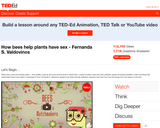
This brief video lesson discusses pollination networks and how pollintaor species aid in plant reproduction. Discussion/assessment questions and suggested supplemental resources are also included.

This project motivates students to learn about organic gardening by developing their own research questions, conducting research, and gardening at their school. Students will plants seeds in a class garden, observe and write about the plant's growth, document their research and observations on a sign to place by their growing plant, and present their findings to the class.
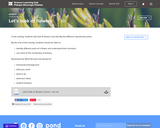
In this activity, students will look at flowers and identify the different reproductive parts.

In this activity, students will conduct a series of hands-on experiments that will demonstrate how the working of these veins, known as capillary action, enables water to travel throughout the length of a plant. Students will learn how the forces of water cohesion and adhesion contribute to the process of capillary action.
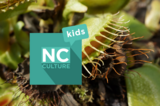
In this short video and accompanying activity and readings, students learn about the Venus Fly Trap and how it adapts to its environment to survive.